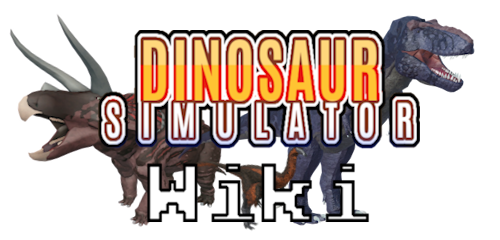Due to an upcoming update, a large majority of dinosaurs will undergo statistic changes. Dinosaur Simulator Wiki staff is will work hard to fully update the wiki as well, but due to the vast amount of changes it will take some time. This notice will be shown globally. It is highly recommended you properly update this page to meet our wiki's standards, and to make sure we can all access the quality information we deserve when the update goes live. Thank you!
Information[]
Leedsichthys (Leeds' fish) is a genus of Pachycormid fish that ate plankton by filter-feeding, much like whale sharks and many types of whales, but in Dinosaur Simulator, their diet is fish, like all other aquatic 'dinosaurs' in the game. It is a massive fish that lived in the oceans of the Middle Jurassic. The third-largest Aquatic creature featured compared to the Carcharocles Megalodon and Shastasaurus.
Appearance[]
The Leedsichthys(leed-sick-thees) or Leed is a large tan-colored fish with a white underbelly and black eyes. It also has dark brown spots on its body and a ring around its eye. It resembles a shark with pectoral fins and is missing a central dorsal fin, instead of having a smaller dorsal fin further down the body.
Trivia[]
Leedsichthys does not have any teeth or spiky body weapons to attack, which means that Leedsichthys should be the only fish species to have no damage, but still does over 50 damage, putting many strong apexes in combat when it should not happen.
Information[]
The second version of the Leedsichthys.
Appearance[]
The Leedsichthys(leed-sick-thees) or Leed is a large light grey-colored fish with a light yellow underbelly and black eyes. It also has light yellow spots on its body and a ring around its eye. It resembles a shark with pectoral fins and is missing a central dorsal fin, instead of having a smaller dorsal fin further down the body.
Information[]
The Original version of Leedsichthys. It once had separate growth from the Default Leedsichthys.
Appearance[]
The Leedsichthys or Leed is a colossal-sized cream-colored fish with a red mouth and black eyes. It resembles a shark with pectoral fins and is missing a central dorsal fin, instead of having a smaller dorsal fin further down the body.
Information[]
Krill Vaccuum Leedsichthys' name is a reference to the feeding methods of modern-day whales, inhaling large clouds of krill floating in the water. The skin is often regarded as a recolor of Classic Leedsichthys.
Appearance[]
It's light blue with a tan-yellow underbelly, with grayish-brown fins, and black gills. It also has a very slim body, with little tan-yellow spots around its body. Its mouth is pink in color with a yellow ring around each black eye.
Information[]
The Island Mimic Leedsichthys is a skin with a shape similar to that of the Krill Vacuum Leedsichthys.
